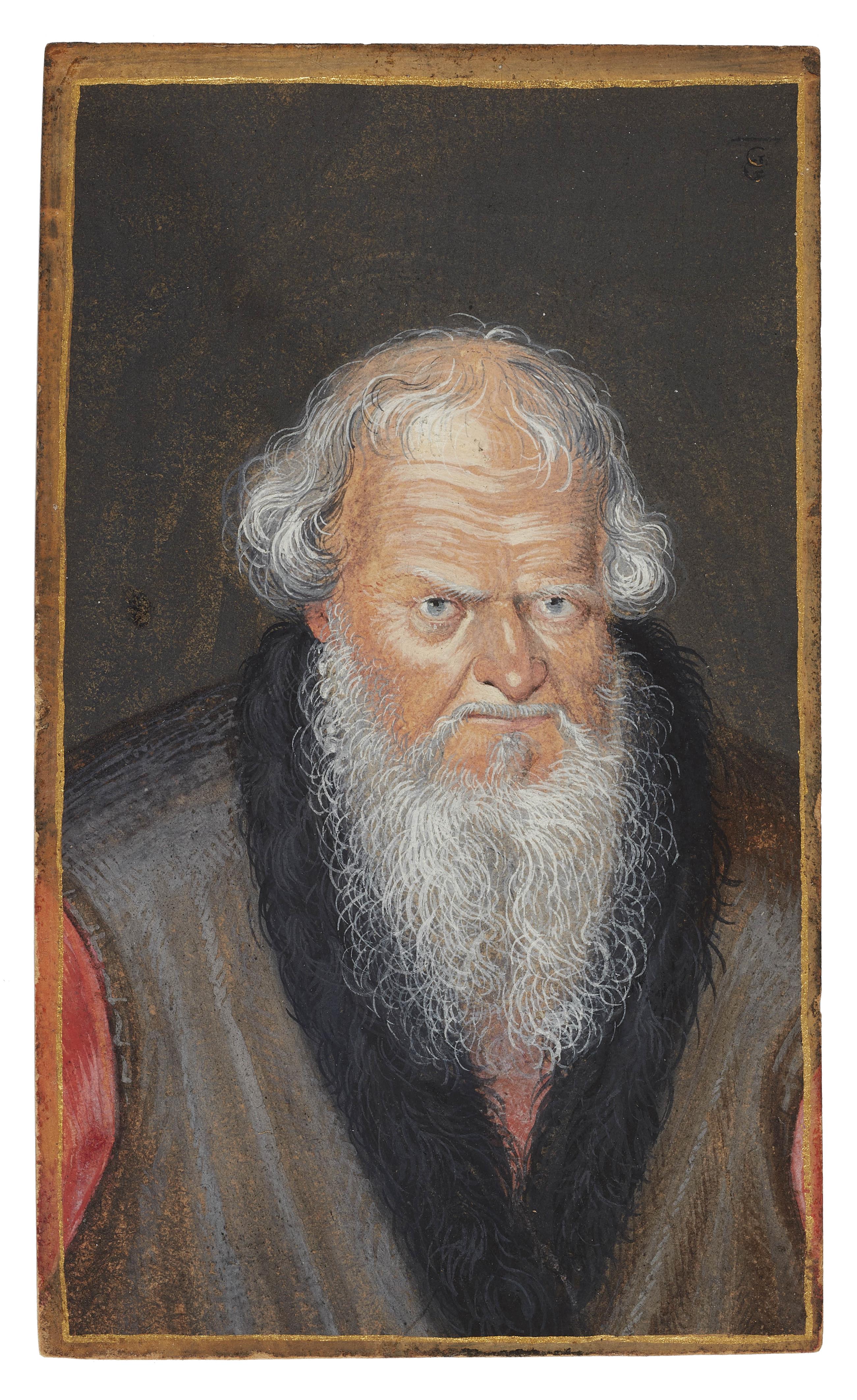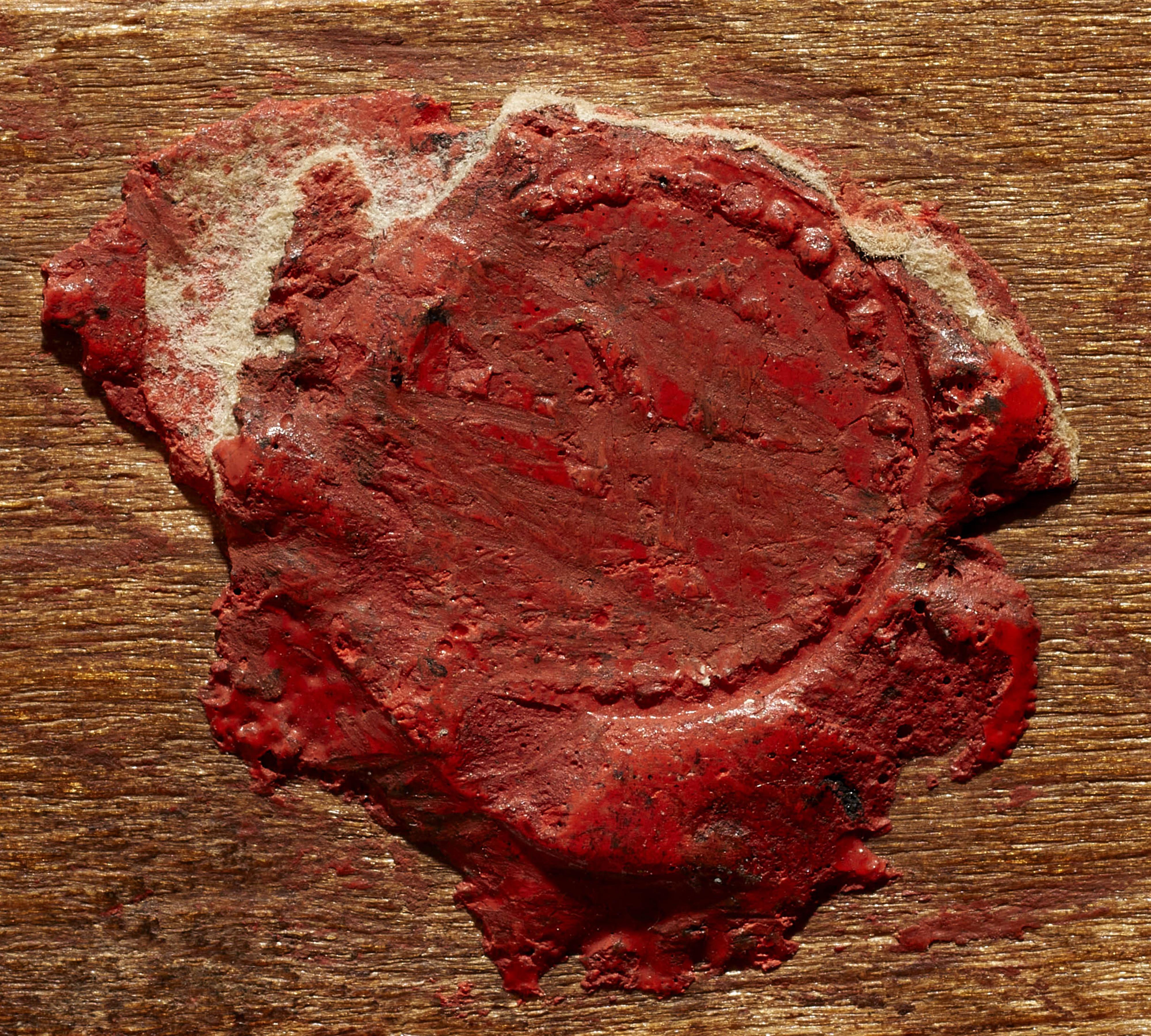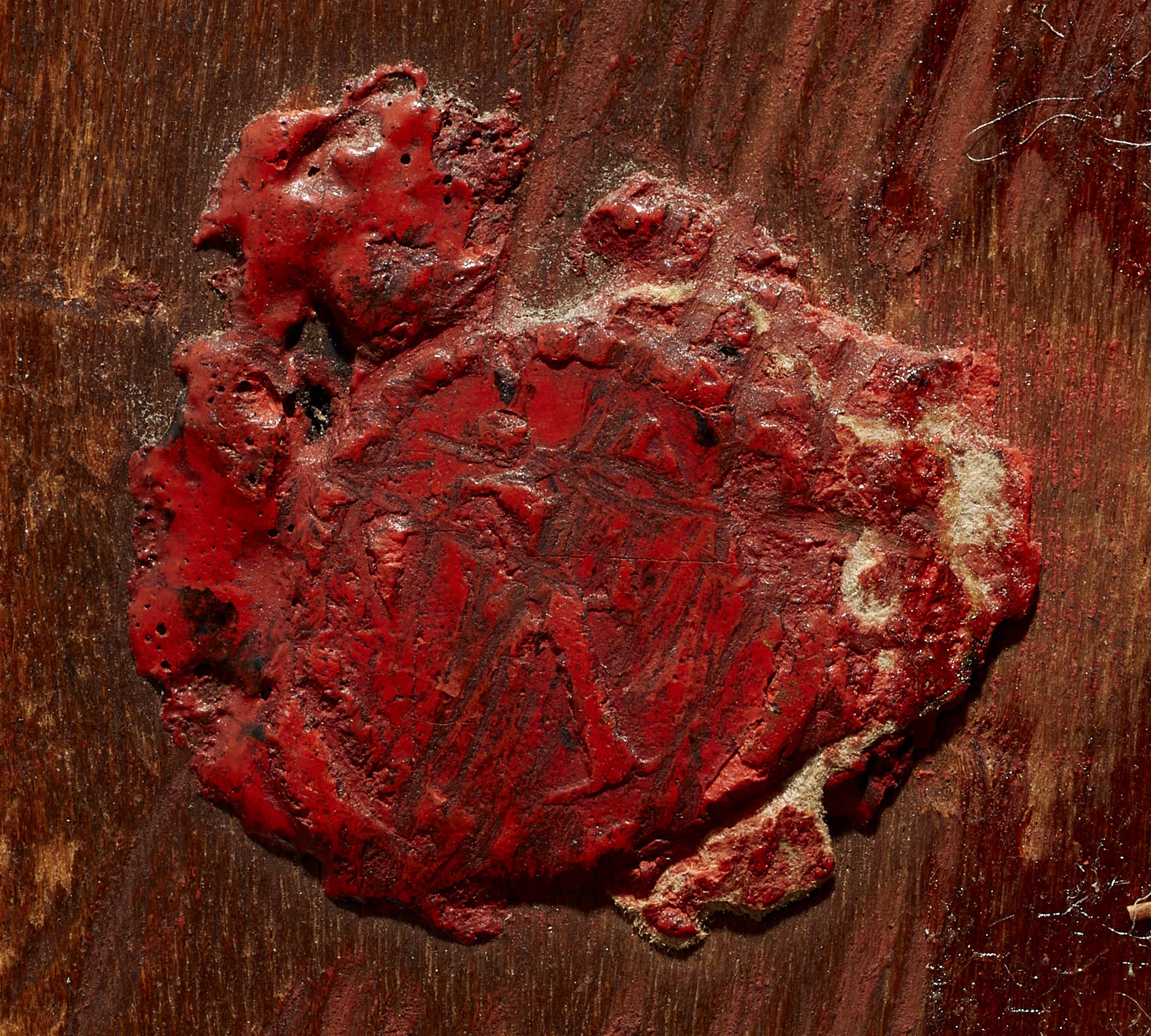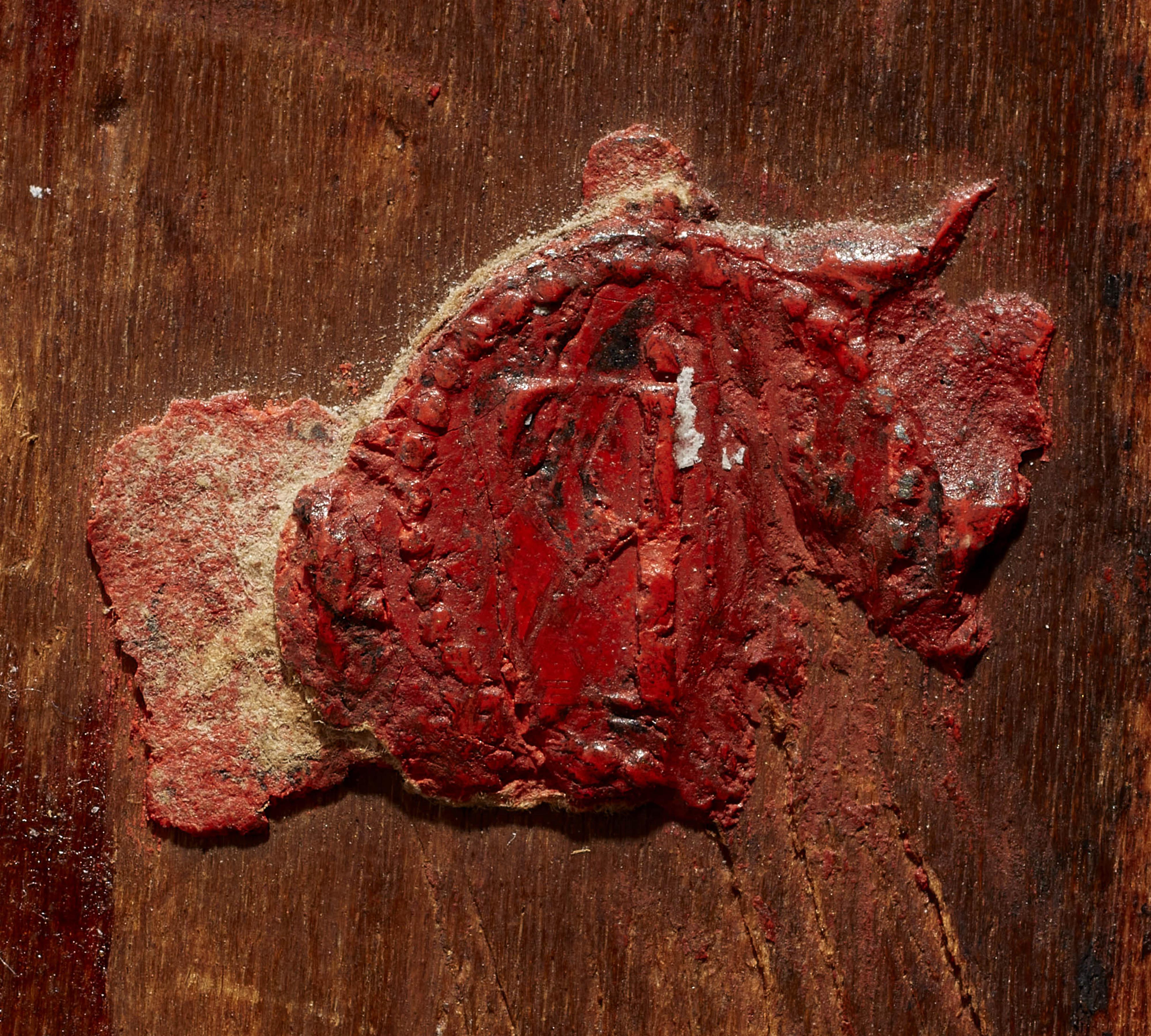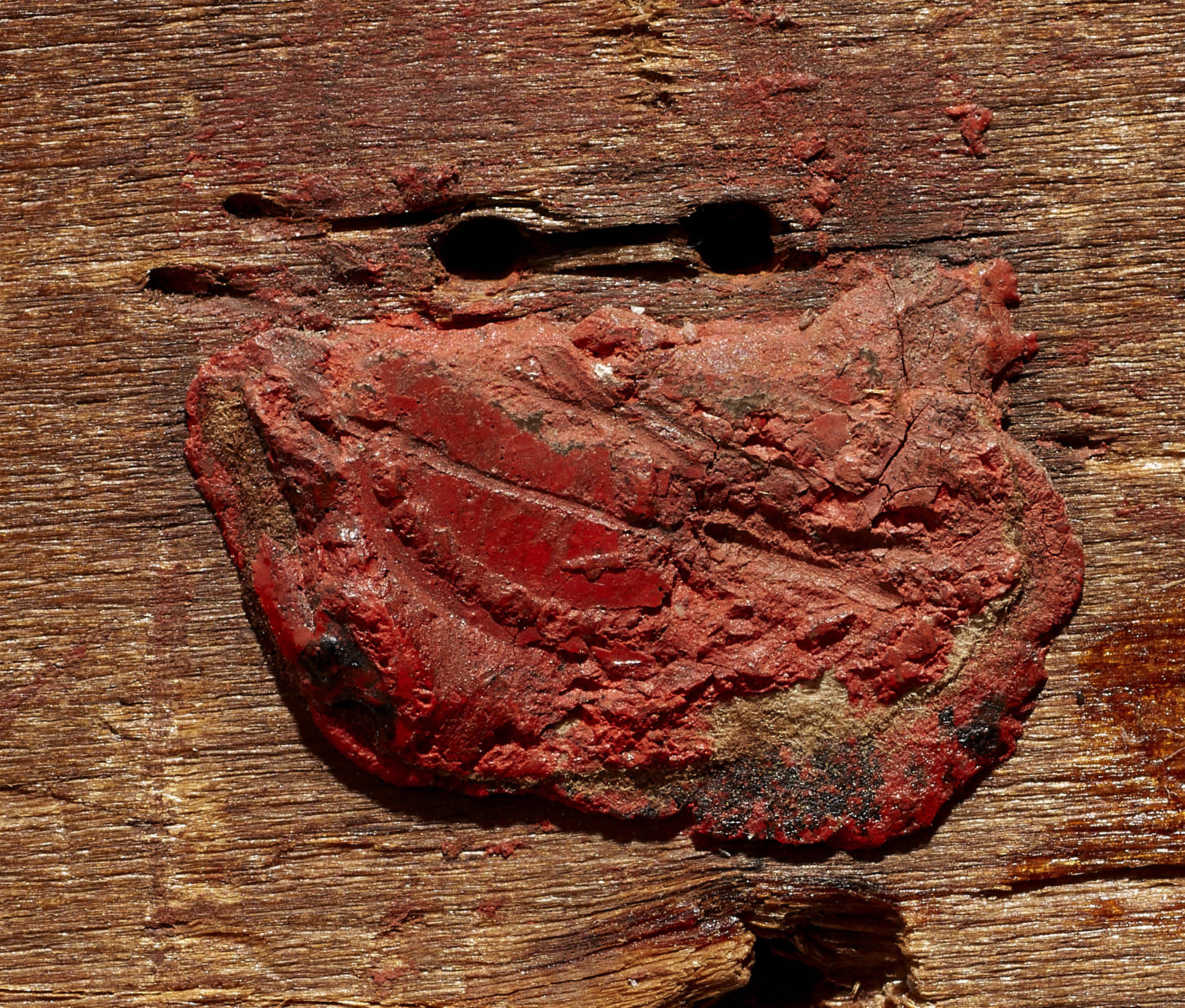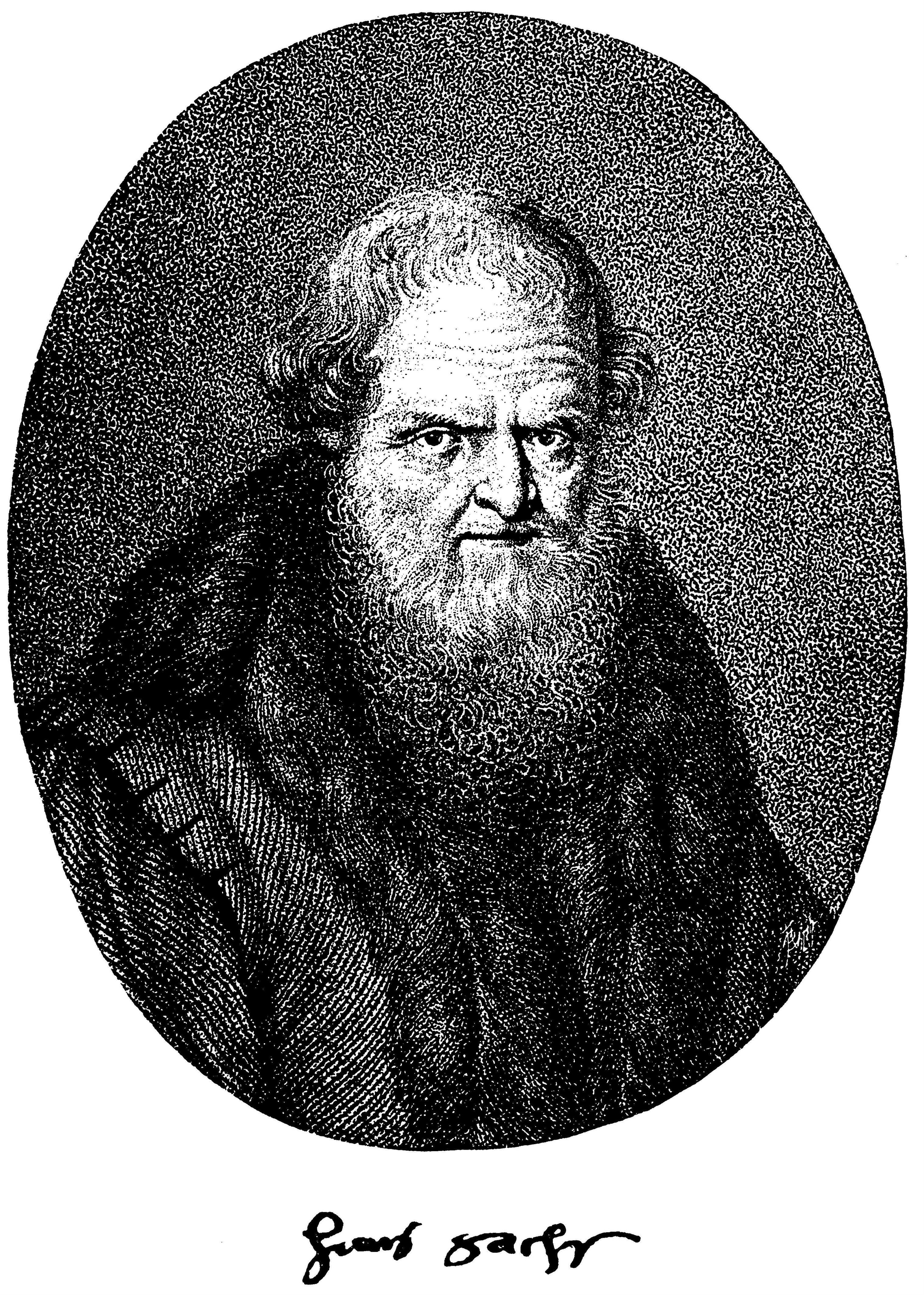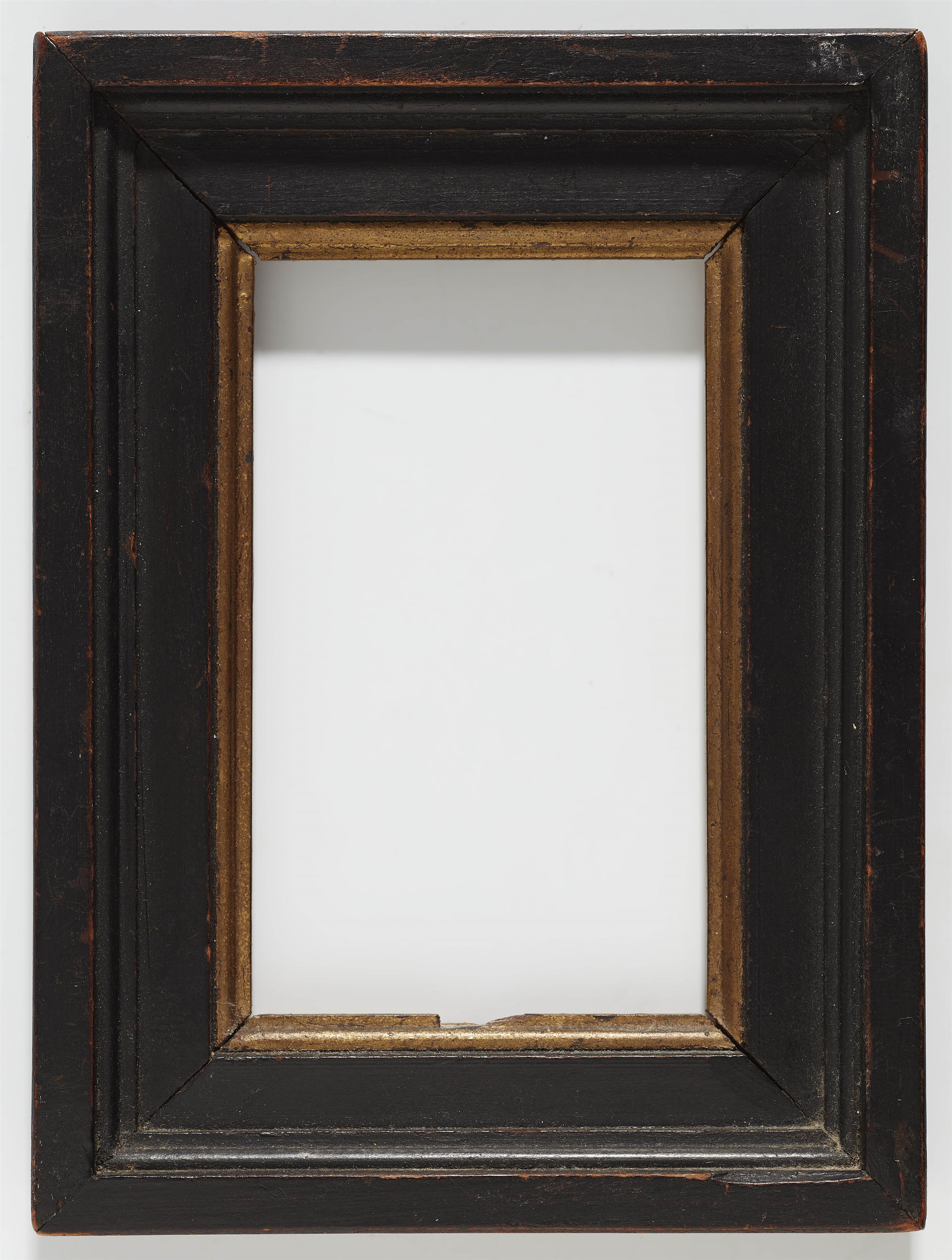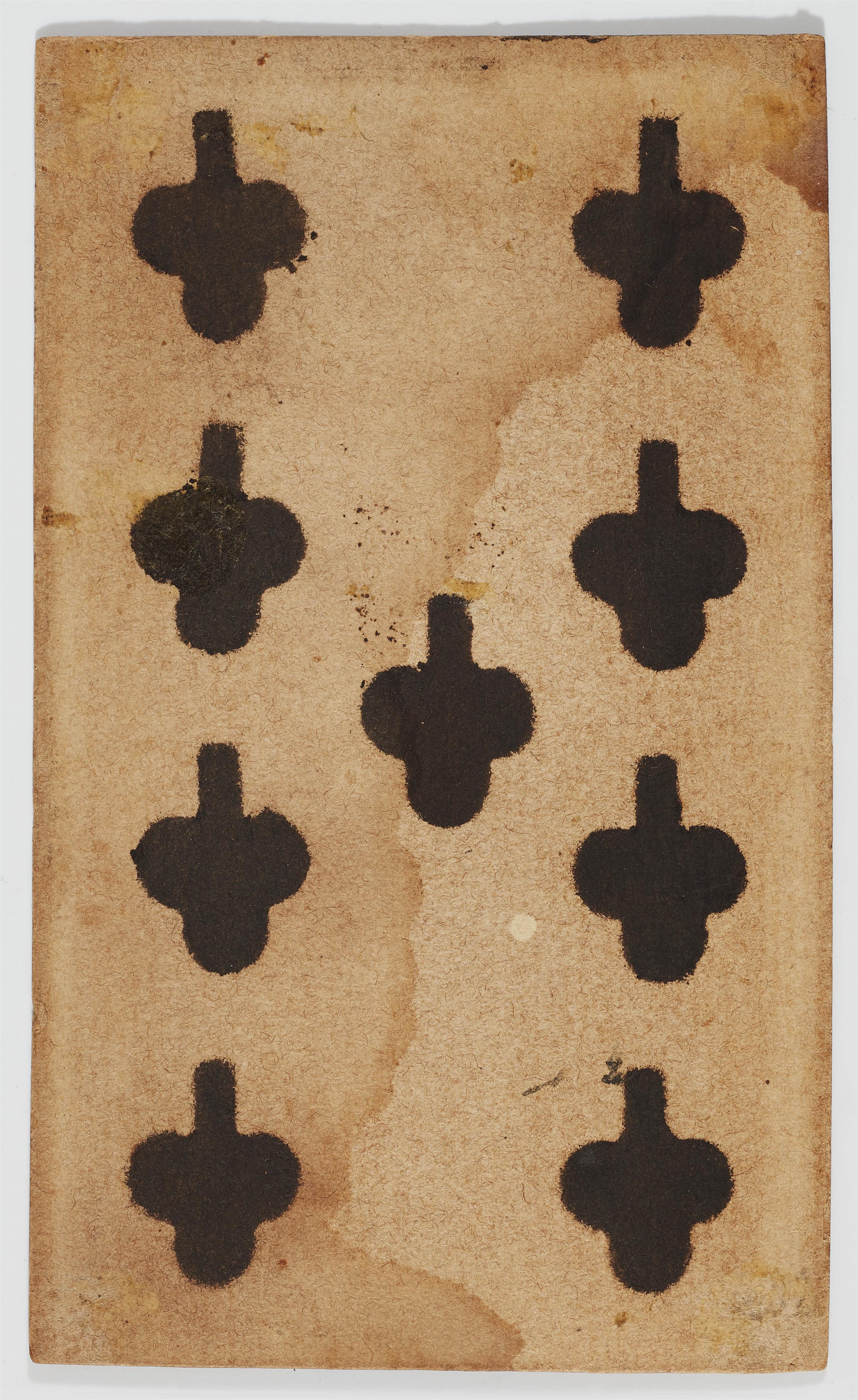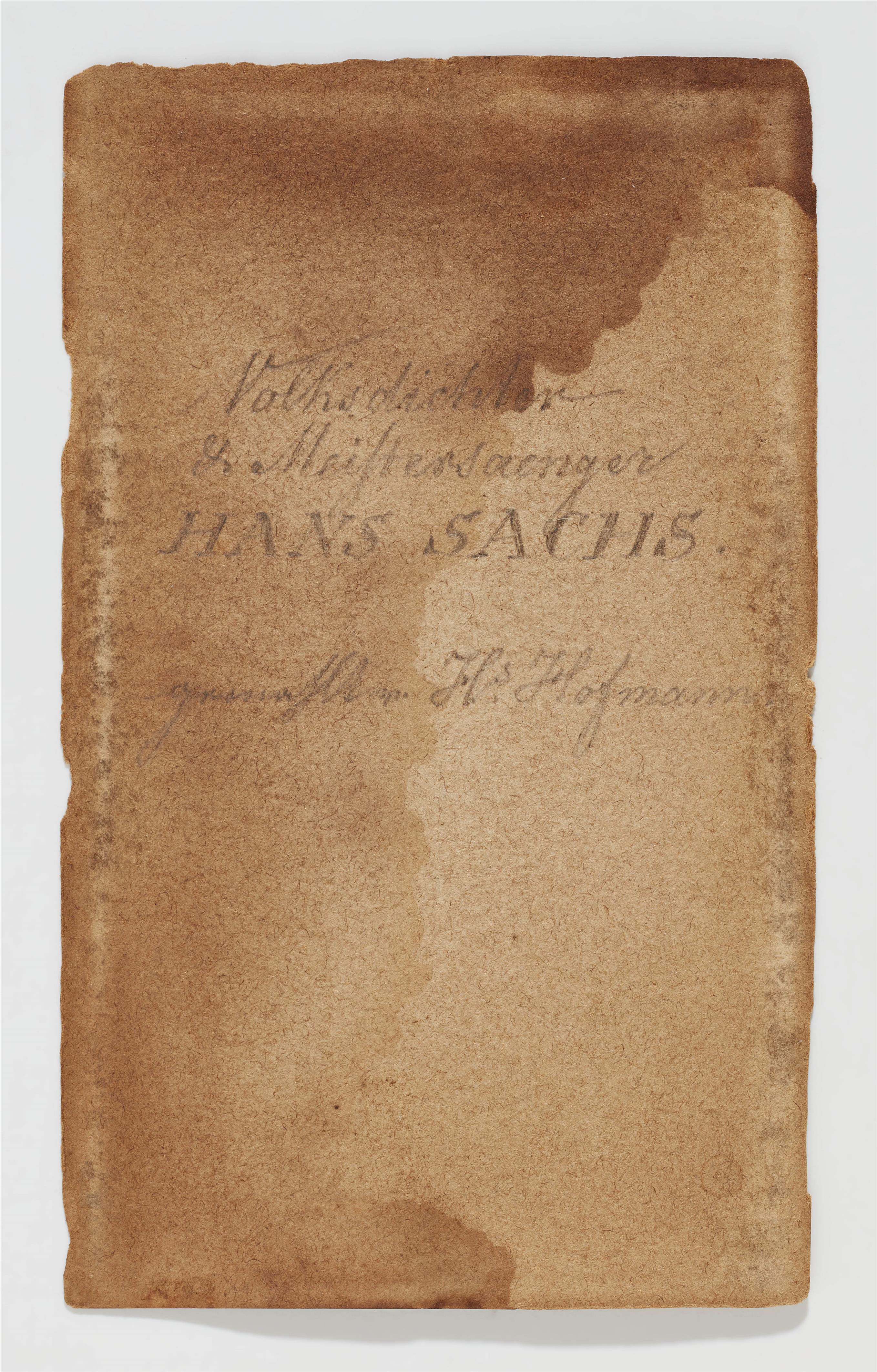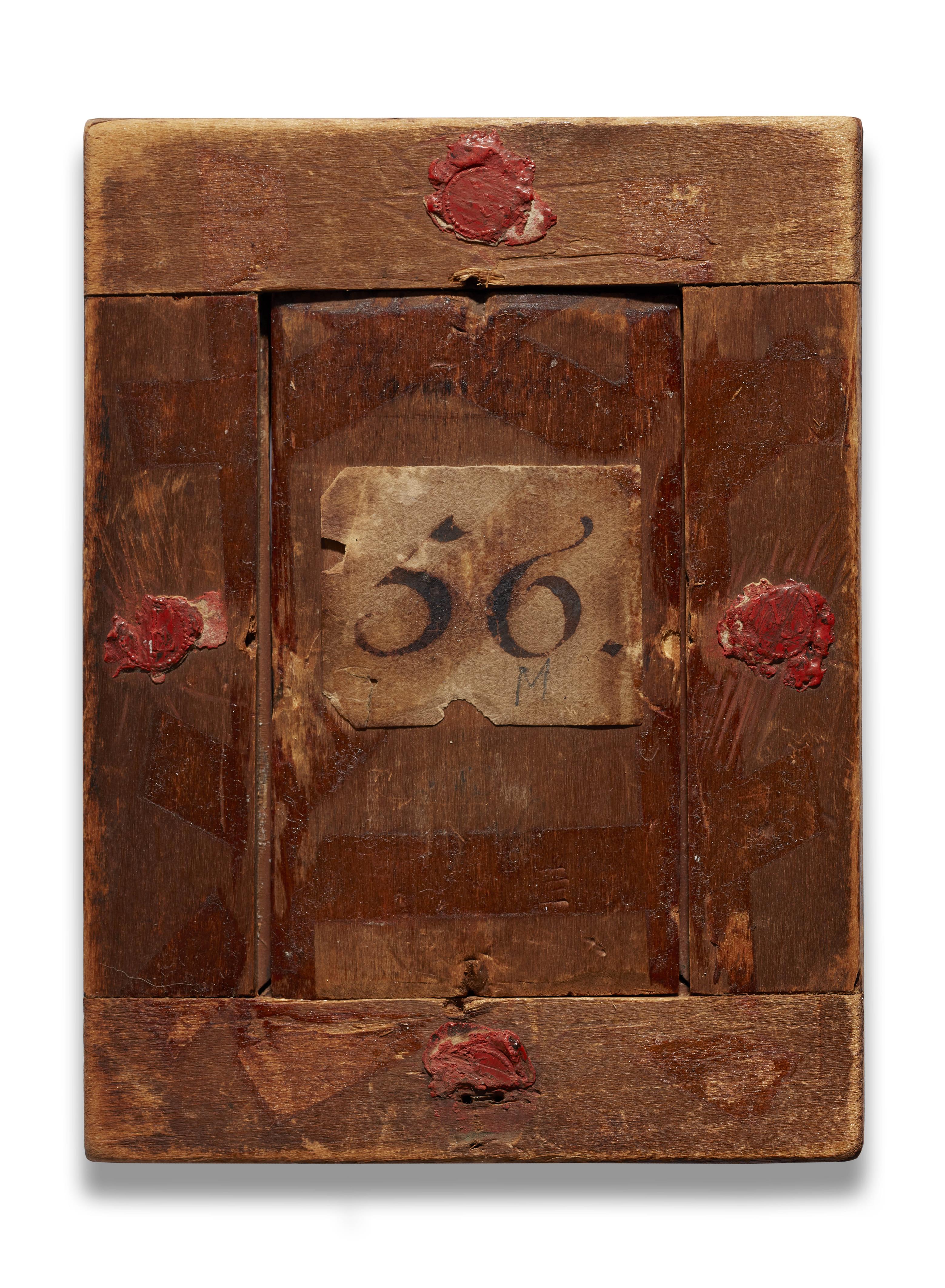Georg Gärtner d. Ä
Portrait of Hans Sachs
Gouache on thin cardboard, playing card printed in woodcut technique on verso, 9 of clubs.. 9.4 x 5.8 cm.
Monogrammed upper right: GG (conjoined).
This miniature portrait of the Nuremberg master singer Hans Sachs is a work from the famous "Praun's Cabinet" that has been lost since the 19th century. This collection of several thousand pieces was assembled by the Nuremberg merchant Paul II Praun (1588-1616). In the mid-1690s, Praun moved part of his collection to Bologna, where he considerably expanded it until his death in 1616.
Immediately after his death, his brother Jacob drew up an inventory of the collection in Italy, which comprised about 700 items. According to his will, the collection was to be brought to Nuremberg and kept there in the Praun house as inalienable family property. For almost 200 years, this wish was fulfilled until financial difficulties led to the dissolution of the collection in around 1800. Some individual pieces were sold directly by the family, then the Nuremberg art dealer Johann Friedrich Frauenholz (1758-1822) and two partners took over the holdings "en bloc" in 1801 and sold them off over the following years. The present portrait was among them, as evidenced by the lacquer seal of Friedrich Frauenholz on each of the four wooden strips that make up the frame of the piece (ill. 3).
The first inventory of 1616 lists 28 works by Hans Hoffmann. Among these, one is described as follows: "No. 103: Hanß Sachßen conterfect, auf einem Welschen kartenblat" (Achilles-Syndram, p. 119). A hundred years later, in a second inventory from 1719, this item can be identified with number 51: "No. 56 Hans Sachsen contrefait in ein kleinen Rämlein mit vergulden leisten", with the addition: "by Hanß Hoffmann" (Achilles-Syndram, p.186).
The engraver Friedrich Fleischmann (1791 Nuremberg - 1834 Munich) produced a portrait of Hans Sachs at the beginning of the 19th century, for which the present portrait obviously served as a model (see ill. 1). This time, too, Hans Hoffmann is named as the artist. Finally, the portrait is also attributed to him on an additional sheet, probably from the 19th century, which is loosely attached to the back of the the piece: "Volksdichter und Meistersinger HANS SACHS gemalt von H. Hoffmann" (ill. 2).
As certain as the provenance of the miniature portrait is on the basis of the correspondences with the inventories of Praun's collection, the false attribution to Hans Hoffmann, which persisted so stubbornly into the 19th century despite the monogram "GG", is all the more astonishing. The reason probably lies in Hoffmann's greater degree of fame. Both Hoffmann and Gärtner are among the representatives of the so-called "Dürer Renaissance", which led to numerous copies and stylistic adoptions by Nuremberg artists in the late 16th century.
Unfortunately, it has not yet been possible to compile a numerically significant oeuvre of Georg Gärtner the Elder. There are only a few works that can be attributed to him with certainty or which are clearly signed. Others are confused with those of his son of the same name, with whom he is said to have shared a workshop. A further factor complicating the compilation of his oeuvre is the fact that both the father and the younger Gärtner often executed copies after Dürer or Pencz, for which there was a keen demand, but which are of little help in the development of an individual style. Two paintings of the Apostles after Georg Pencz, for example, also have the monogram GG and at the same time the Latinised signature "Giorgius Hortolanus". In view of this scant information, the discovery of this miniature portrait by Georg Gärtner, which is as finely painted as it is astonishingly well preserved, is particularly gratifying. The drawing is thought to date from around 1580/90, was created in Nuremberg and acquired by Paul Praun before he moved to Bologna. The model could have been an engraving by Joost Amman, who also depicted the master singer as an old man in an engraving in the 1570s.
Provenance
Paulus Praun II (1548-1516), Nuremberg. - Johann Friedrich Frauenholz (1758-1822), art dealer and collector in Nuremberg. - German private property.
Literature
Christoph Gottlieb von Murr, Beschreibung der vornehmsten Merkwürdigkeiten des H. R. Reichs freyen Stadt Nürnberg ..., Nuremberg 1778, p. 472. - Christoph Gottlieb von Murr, Description du Cabinet de Monsieur Paul de Praun à Nuremberg, Nuremberg 1797, p. 8, no. 56. - Katrin Achilles-Syndram, Die Kunstsammlung des Paulus Praun. Die Inventare von 1616 und 1719, Nuremberg 1994. - Rainer Stüwe, Dürer in der Kopie. Die Gemälde und Graphiken der Nürnberger Dürer-Kopisten des 16. und 17. Jahrhunderts, Textband, Heidelberg 1997, p. 209, no. A 1.c.

